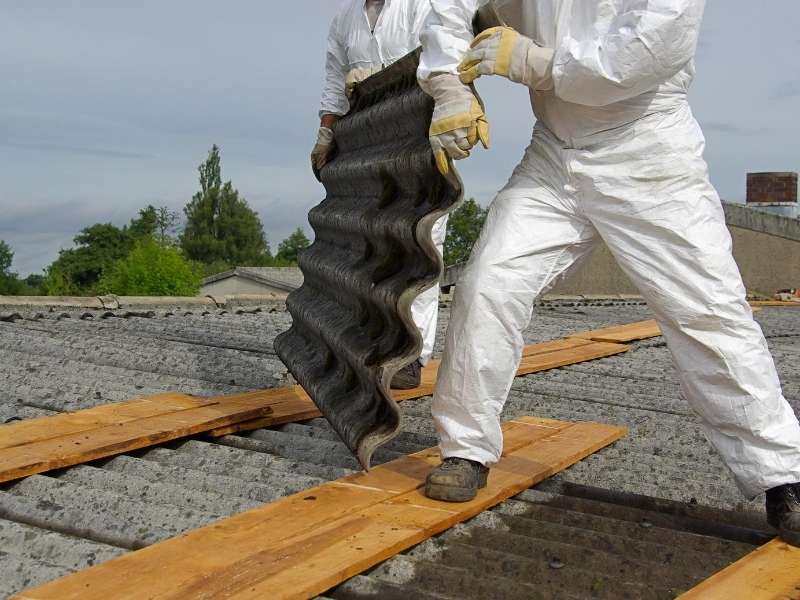Asbestos is a naturally-occurring mineral composed of flexible and soft fibers that are heat-resistant. Of course, if you are not aware, asbestos in your house may pose health risks. For instance, one result is mesothelioma cancer which is caused by inhaling asbestos fibers. When this happens a lining forms in the lungs, abdomen, and the heart. The problem is, exposure to asbestos is so hard to detect that it often exists without anyone knowing.
Sadly, some household items that might contain asbestos include cosmetic or personal hygiene products. Since both talc and asbestos often occur together in the mining process, they get thrown together in the mix! Therefore, asbestos from talcum powder in cosmetic and personal hygiene products increases the risk of mesothelioma cancer because asbestos fibers naturally contaminate talc products.
Aside from that, you might find asbestos hiding in the walls of your own home. If this concerns you, please continue reading to learn more about the possibility of asbestos hiding in your home.
6 Tips for Detecting if Asbestos is Hiding in Your Home

① How to Tell if Material in Your House Contains Asbestos
Asbestos is not identifiable by simply smelling or looking. If anything, moving items in the house may lead to asbestos exposure. The only definitive way to identify the presence of asbestos in any material in your house is to hire a certified asbestos building inspector or an environmental firm to perform testing. They might even offer to counter check the extent of the spread.
Several governments have stipulated laws and guidelines on how to go about asbestos inspections. Therefore, it’s important to be aware of the rules and regulations regarding asbestos in your location.
② Areas in The Home Where Asbestos Might Be Hiding
Believe it or not, there are plenty of places in the home where asbestos material is sometimes found. They’re usually a blend with other materials such as plaster and cement. Such materials include the following:
- Artificial ashes and embers, for gas fireplaces
- Cement products such as asbestos cement, water tanks, gutters, etc.
- Insulation boards used between wall partitions
- Insulation where there are oil or coal furnaces and door gaskets
- PVC tiles
- Reinforced plastics
- Roof tiles, paneling, and exterior walls with textured paints
- Siding and shingles
- Sprayed coating
- Stove-top pads
- Vinyl asbestos tiles
However, most governments have very strict quality assurance measures to regulate the production of asbestos-related materials. So, being aware of local and national guidelines is important when trying to detect asbestos.
③ Asbestos Hiding on Your Home Exterior
Old houses with shingles are the most vulnerable to asbestos. On the bright side, external exposure to asbestos is relatively less hazardous. However, extreme circumstances such as a rainstorm or high winds may increase your chances of exposure.
Normally, asbestos from the external part of the home releases during work maintenance, renovations, demolition, and other activities. So, it’s important to try to eliminate the risk of asbestos exposure in your home. Therefore, it’s highly important to schedule regular house inspections for possible asbestos removal. Doing so keeps you and your family safe from the health hazards of asbestos exposure.
④ What to Do If You Think Your Home Contains Asbestos
- If there’s a substance suspected to be asbestos, don’t touch it regardless of the condition of the material. Instead, it’s best to leave it alone.
- Most homeowners lack knowledge of asbestos and it is a hazardous material. Therefore, it’s crucial to call for a professional asbestos handler to thoroughly inspect your home.
⑤ List of Possible Side Effects of Asbestos Exposure
We know that exposure to asbestos is linked directly to mesothelioma cancer. However, there are many other devastating side effects as you see below in the following list:
- Asbestosis
- Laryngeal cancer
- Lung cancer
- Ovarian cancer
- Pleural effusions
- Pleural plaques
- Diffuse pleural thickening
- Pleuritis
Interestingly, the risk of getting any of these diseases depends on several factors, which might include the following:
- How long you’ve been exposed to asbestos
- Intensity of exposure
- Initial time of exposure
- Type and size of asbestos fibers
- Smoking history of the exposed individual
⑥ What to do When Exposure Happens
First, seek immediate medical attention when you come into contact with asbestos. Interestingly, there’s no definitive test to confirm the presence of asbestos in the lungs. However, imaging scans assist in revealing asbestos symptoms. Next, even if your tests come back negative, it’s wise to seek a second opinion from an occupational pulmonologist.
Conclusion
Most homeowners overlook asbestos due to a lack of information. However, it’s tough to identify because asbestos is in household products. Sadly, that includes even personal hygiene or cosmetic products. As a precaution, homeowners must get asbestos house inspections of the entire home.
If you have any questions about this topic, please leave them in the comments below. You will also find a few links below to take to even more fantastic and useful information about all things design.
Images Courtesy of Canva.
How To Choose The Best Garden Furniture For Your Outdoor Living Space
How to Reduce Clutter: 5 Effective Tips to Know





